This project explored shaping and disrupting patterns of rigid repeating elements using growth over time and field forms.

Our initial exploration focused on the aggregations of minimal surfaces forms, starting with the Gyroid. This expanded into the general set of triply periodic minimal surfaces, whose multiple directions of tessellation allow freedom during aggregation.
After some experiments in creating transitions between different forms in this class, we decided to use the Schwarz Primitive as a basic building block, as it was the most realistic as a constructable unit, and had clear circular connections along its axes.
Working with triply-periodic minimal surfaces, the natural method for aggregation was in voxel space. This allowed the aggregation computation to be divorced from the module geometry and operate solely on lists of numbers, and allowing the system to be more efficient.
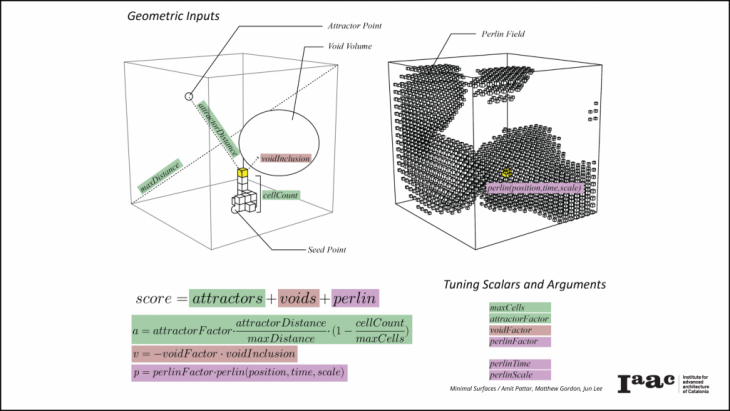
The basic input elements that are used for aggregation include several seed cells, from which additional cells will grow out from; one or more attractor points, which new cells will attempt to grow towards to various degrees; and one or more void volumes; that new cells will attempt to avoid. Finally, a perlin noise field is sampled to give additional variation locally, and in a more controlled manner than adding pure randomness.
At every step, the program chooses a cell from the currently ‘live’ cells that have already been aggregated. The system chooses one of this cells six ‘neighbors’ in the X, Y, or Z axes in which to add a newmodule. This neighbor is chosen according to a score calculated from a number of geometric and user-defined variables. Critically, the strength of the effect of each geometric element on the final score had to be tuned experimentally, to keep the system from flying off into the extremes of unreadable fuzz or uninteresting blobs.
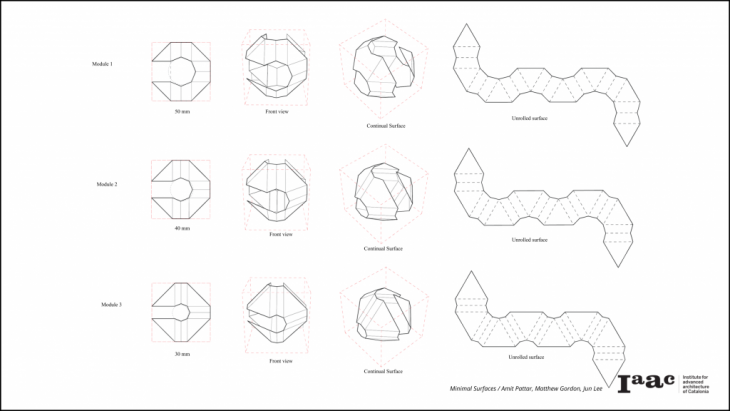
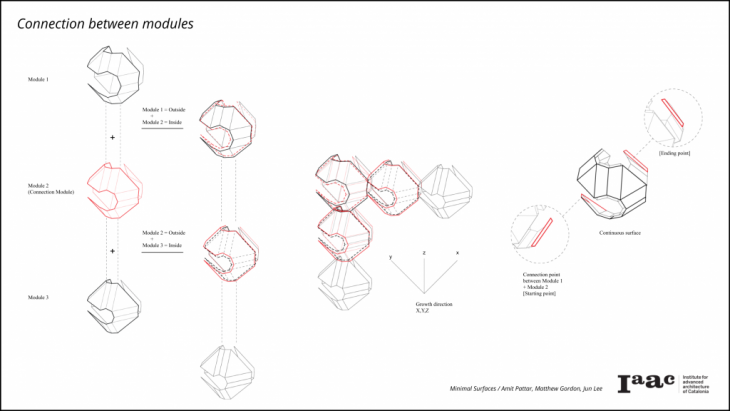
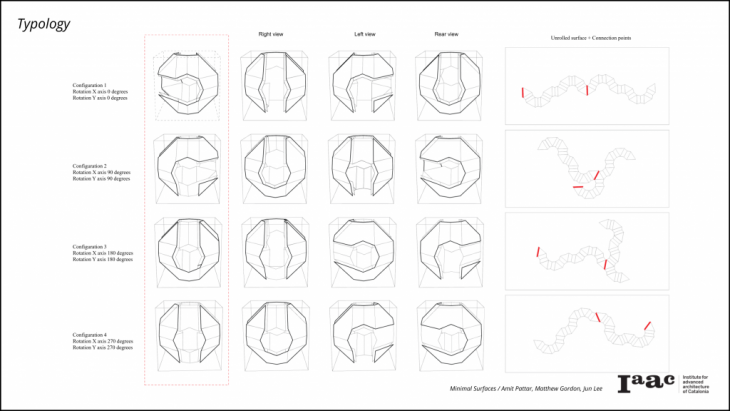
To develop the module towards final constructable form, we decided to simplify the Schwarz Primitive into a low poly version. From here, certain polygons were removed to allow the form to unroll into a single non-overlapping strip. This added greater transparency to the modules while reducing their rigidity; in response each module now became several of these folded strips nested within each other. This allowed for a thicker overall ‘skin’ with the connections between the layers holding the whole structure more rigid, while allowing the amount of transparency to be controlled by rotating the different layers in relation to each other.
Different combinations of sizes and rotations were chosen for different parts of the final aggregation depending on factors such as local density of modules and overall position within the aggregation, to control light and visual heaviness.
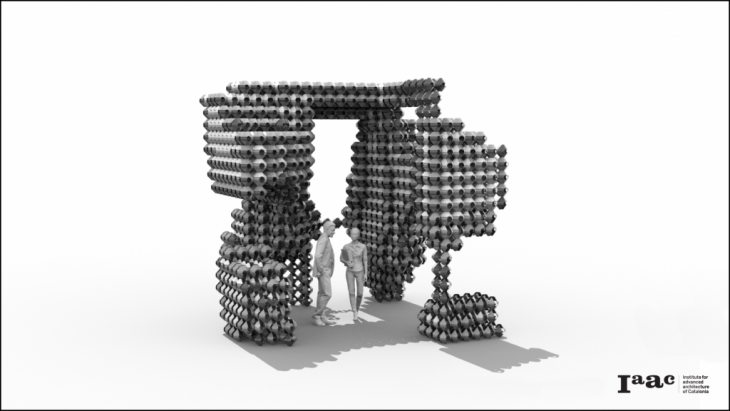
The final pavilion design was grown from three seed points, placed in an arc. They grew towards a single attractor at the top of the planned area, within a single oval void volume to encourage an inhabitable space. While tuning the parameters towards the final design, elements such as a rough ‘roof’, a largely closed off ‘back wall’, and a lack of single modules hanging in space were sought after. This aggregation was also finally landed on due to emergent practical features such as flat surfaces resembling a table and bench.
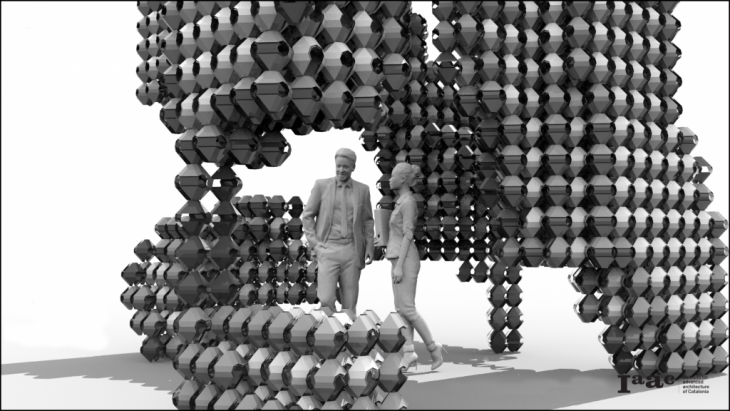
Iterative assemblies is a project of IAAC, Institute for Advanced Architecture of Catalonia developed at Master in Robotics and Advanced Construction in 2019 by:
Students: Matthew Gordon, Jun Lee, Amit Pattar
Faculty: Alessio Erioli
Faculty Assistant: Eugenio Bettucchi